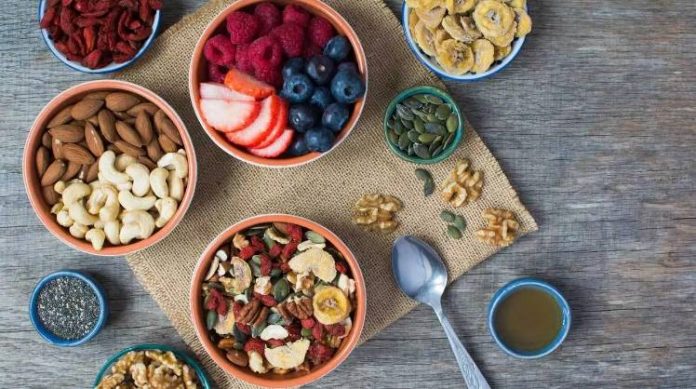So, what diets is everyone into these days? Are you dieting at all? Have you tried dieting before and what was the experience like for you? The one thing I will tell you is that if you think you tried something but didn’t get the results you were expecting, you were either doing something wrong or not doing anything at all.
Part of being a biohacker is experimenting. That means it’s OK to test various versions of the same thing. Find out what suits you best and gets you the results you desire. In that sense don’t be disappointed if you tried a certain diet in the past that failed you. Move on to the next and stick to your guns. And whatever you do, don’t waste time sticking to habits and plans that aren’t getting you results. This article will dive into two of my absolute favorite diets, the paleo diet and the ketogenic diet. If you do these right, I guarantee the results you are looking for will come, from weight loss, dissipation of allergy symptoms, cellular detoxing and inflammation down-regulation, to thinking more clearly and having more confidence.
First let’s start with the paleo diet. Simply put, the paleo diet mimics what our ancestors, the paleolithic humans, would have eaten during their time. There is still some flexibility but, the general gist of it is:
- EAT – Meat, fish, eggs, vegetables, fruits, nuts, seeds, herbs, spices, healthy fats and oils.
- AVOID – Processed foods, sugar, soft drinks, grains, most dairy products, legumes, artificial sweeteners, vegetable oils, margarine and trans fats.
More specifically, the ingredients you should be staying away from on this diet are:
- Sugar and high-fructose corn syrup: Soft drinks, fruit juices, table sugar, candy, pastries, ice cream and many others.
- Grains: Includes breads and pastas, wheat, spelt, rye, barley, etc.
- Legumes: Beans, lentils and many more.
- Dairy: Avoid most dairy, especially low-fat (some versions of paleo do include full-fat dairy like butter and cheese).
- Some vegetable oils: Soybean oil, sunflower oil, cottonseed oil, corn oil, grapeseed oil, safflower oil and others.
- Trans fats: Found in margarine and various processed foods. Usually referred to as “hydrogenated” or “partially hydrogenated” oils.
- Artificial sweeteners: Aspartame, sucralose, cyclamates, saccharin, acesulfame potassium. Use natural sweeteners instead.
- Highly processed foods: Everything labeled “diet” or “low-fat” or that has many additives. Includes artificial meal replacements.
Basically, if it looks like it was “manufactured”, stay away from it. And please don’t get sucked into deviating from the guidelines. The reason people fail at their diets and at things in general is that they do not maintain the rigid discipline necessary to carry on. One day slipping on the diet becomes two, one day skipping the gym becomes a week, and before you know it you may even be worse off than you started. If this sounds like you, then bulletproof your routine so that this doesn’t happen.
For example, when I decided one day to get on the paleo diet, the first thing I did was I came home and immediately threw out anything and everything in my kitchen pantry that wasn’t following the guideline. Some of the packaging was still unopened, some I had bought just a day before, but I knew if I got caught up here trying to convince myself that throwing this stuff out would be a “waste of money”, that I would most likely never start. When you are going to jump into something new, a certain level of pre-study and exploration is necessary so that you know what you are getting yourself into, but when it’s time to pull the trigger, don’t hesitate or you will miss the mark. Another way to bulletproof your routine is to make it an absolute habit to check the nutrition label on any ingestible product you purchase. And no, I’m not just talking about the macros, I’m talking more about the actual ingredients. A lot of the times people stumble on companies that don’t sell a quality product, or that market their goods as one thing when in reality they are disguising something that really isn’t as good for you as they make it out to be. This happens even in places you wouldn’t expect, like Whole Foods. Take time reading reviews if you are purchasing a specific product off a specific website, and always check the nutrition label on the back of your products. I can’t stress this enough. Some people actually KNOW the product they are ingesting sounds healthy but isn’t (for all you veggie crisp lovers out there), because they have checked, but they consume it anyway. Don’t be one of these people. Put in the work and the results are more likely to follow.
Here are some more specifics on the foods you SHOULD be eating on the paleo diet.
- Meat: Beef, lamb, chicken, turkey, pork and others.
- Fish and seafood: Salmon, trout, haddock, shrimp, shellfish, etc. Choose wild-caught if you can.
- Eggs: Choose free-range, pastured or omega-3 enriched eggs.
- Vegetables: Broccoli, kale, peppers, onions, carrots, tomatoes, etc.
- Fruits: Apples, bananas, oranges, pears, avocados, strawberries, blueberries and more.
- Tubers: Potatoes, sweet potatoes, yams, turnips, etc.
- Nuts and seeds: Almonds, macadamia nuts, walnuts, hazelnuts, sunflower seeds, pumpkin seeds and more.
- Healthy fats and oils: Extra virgin olive oil, coconut oil, avocado oil and others.
- Salt and spices: Sea salt, garlic, turmeric, rosemary, etc.
More often than not, when starting out on this diet, you may feel intense cravings at the beginning which are specifically for dairy products or sugar-laden products. Ignore these cravings, they will pass. In my experience, once you have stuck to a diet for 21 days, as long as you are dually putting in the mental work of making sure you are shifting your mindset and telling yourself this is your new lifestyle, not just a fad, then you should be free of any cravings after this time. One last thing I’ll mention about this diet is wine and dark chocolate (70% or above) are OK in small quantities. But when you are thirsty on a regular basis you should be sticking to tea, black coffee and water. In other words there should be no milk or fruit juice in your refrigerator.
This weekly meal plan sample from healthline.com should paint a clear picture for you of what this routine will look like. For those of you just getting started with this, my advice would be to follow the plan below.
Monday
- Breakfast: Eggs and vegetables fried in coconut oil. One piece of fruit.
- Lunch: Chicken salad with olive oil. Handful of nuts.
- Dinner: Burgers (no bun) fried in butter, with vegetables and some salsa.
Tuesday
- Breakfast: Bacon and eggs, with a piece of fruit.
- Lunch: Leftover burgers from the night before.
- Dinner: Salmon fried in butter, with vegetables.
Wednesday
- Breakfast: Meat with vegetables (leftovers from night before).
- Lunch: Sandwich in a lettuce leaf, with meat and fresh vegetables.
- Dinner: Ground beef stir-fry with vegetables. Some berries.
Thursday
- Breakfast: Eggs and a piece of fruit.
- Lunch: Leftover stir-fry from the night before. A handful of nuts.
- Dinner: Fried pork with vegetables.
Friday
- Breakfast: Eggs and vegetables fried in coconut oil.
- Lunch: Chicken salad with olive oil. Handful of nuts.
- Dinner: Steak with vegetables and sweet potatoes.
Saturday
- Breakfast: Bacon and eggs with a piece of fruit.
- Lunch: Leftover steak and vegetables from the night before.
- Dinner: Baked salmon with vegetables and avocado.
Sunday
- Breakfast: Meat with vegetables (leftovers from night before).
- Lunch: Sandwich in a lettuce leaf, with meat and fresh vegetables.
- Dinner: Grilled chicken wings with vegetables and salsa.
They also provide an easy-to-follow grocery list you can use to implement the above weekly meal plan. I’ve included that below so that you have an easier time shopping for ingredients.
- Meat: Beef, lamb, pork, etc.
- Poultry: Chicken, turkey, etc.
- Fish: Salmon, trout, mackerel, etc.
- Eggs
- Fresh vegetables: Greens, lettuce, tomatoes, peppers, carrots, onions, etc.
- Frozen vegetables: Broccoli, spinach, various vegetable mixes, etc.
- Fruits: Apples, bananas, pears, oranges, avocado
- Berries: Strawberries, blueberries, etc.
- Nuts: Almonds, walnuts, macadamia nuts, hazelnuts
- Almond butter
- Coconut oil
- Olive oil
- Olives
- Sweet potatoes
- Condiments: Sea salt, pepper, turmeric, garlic, parsley, etc. [1]
Stay tuned for Part 2 of this series where we dive into my other favorite diet for longevity- The Ketogenic or “keto” diet!
Until then..
Leon
SOURCES
[1] – https://www.healthline.com/nutrition/paleo-diet-meal-plan-and-menu#section1










